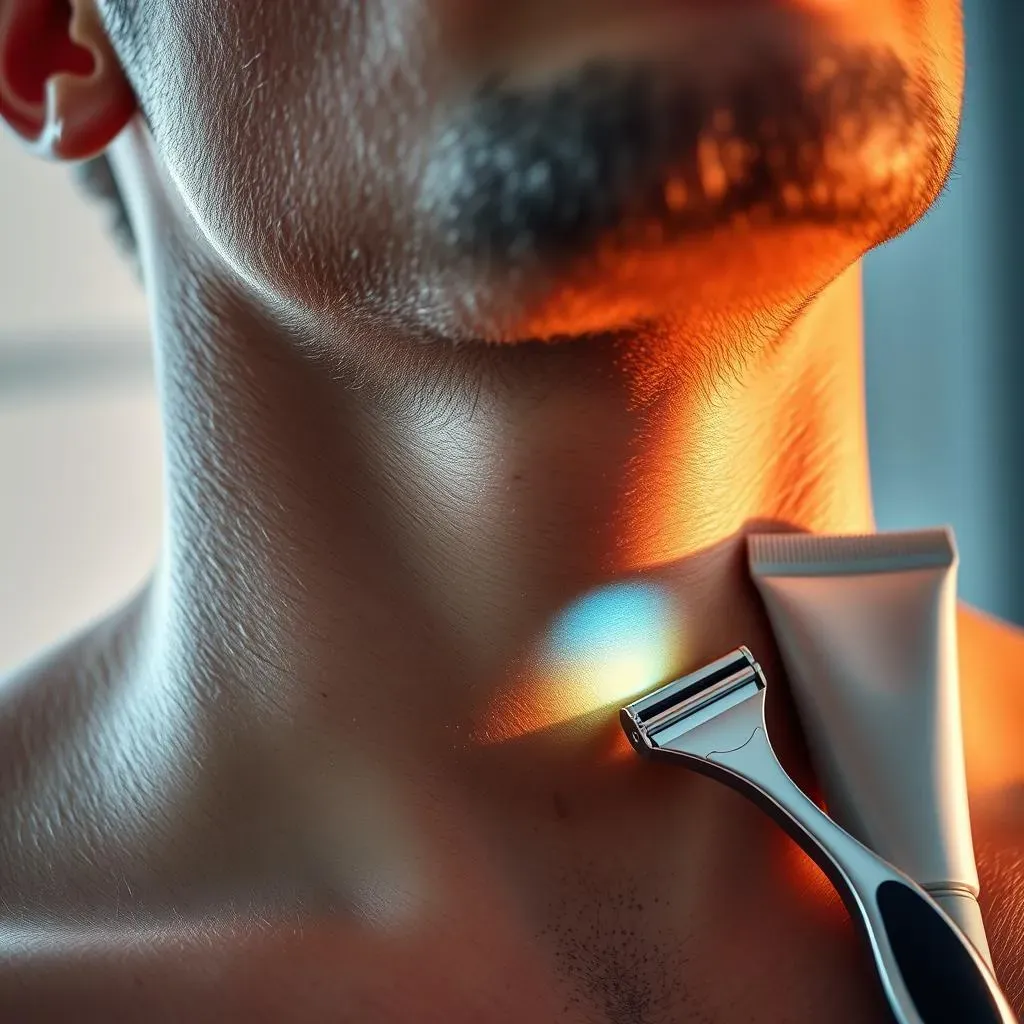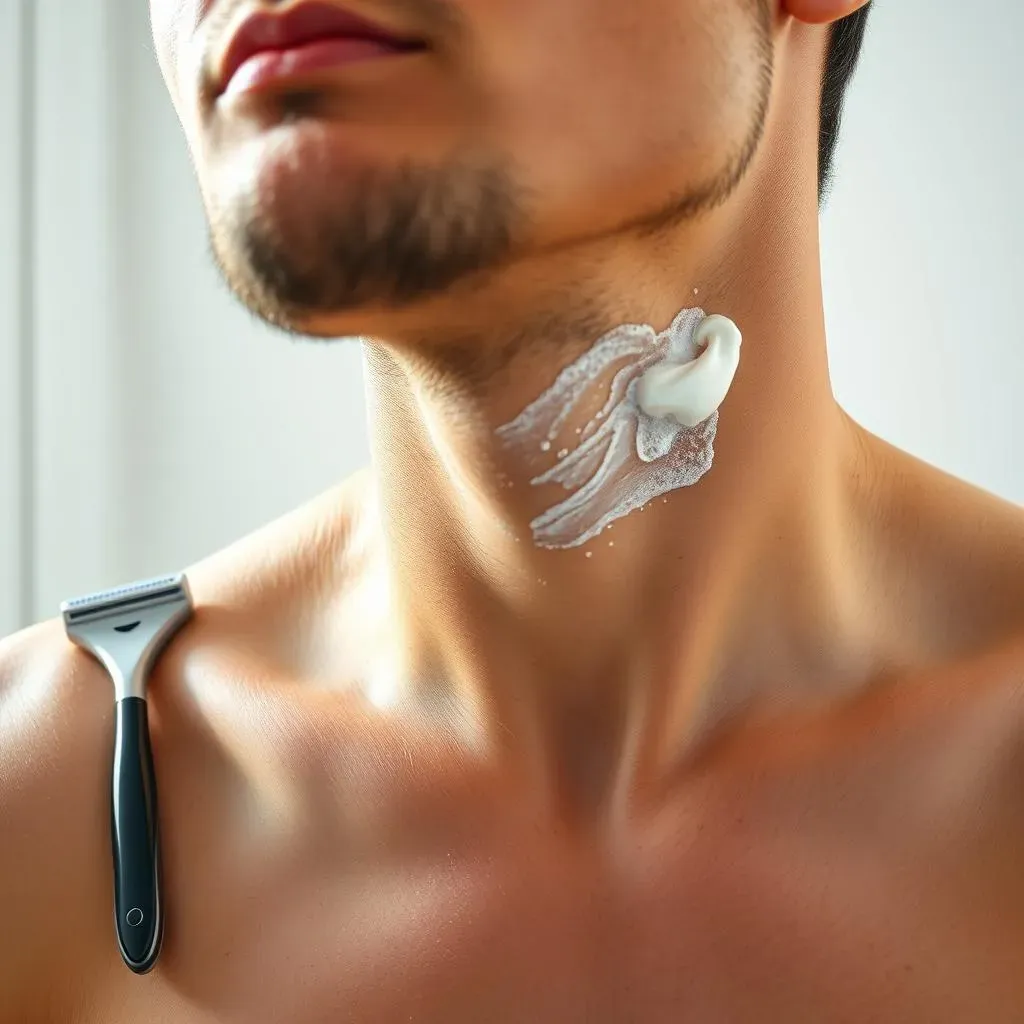Table of Contents
So, you're thinking about ditching the razor and embracing the world of at-home laser hair removal? Smart move! But before you zap away those pesky hairs, there's one crucial step you absolutely can't skip: shaving. Yes, you heard that right. The question "do you shave before at home laser hair removal" isn't just a suggestion; it's a must-do for effective treatment. Think of it like prepping a canvas before painting. If you don't, the results just won't be what you're hoping for. In this article, we'll break down why shaving is so important, how to do it right, what happens if you don't, and how to care for your skin afterward. We’ll get straight to the point, no fluff, just the info you need to get the best results from your at-home laser device. Let's dive in and get you on the path to smooth, hair-free skin!
Why Shaving Before Laser Hair Removal is a Must

Why Shaving Before Laser Hair Removal is a Must
The Science Behind the Shave
let's get real for a second. Laser hair removal isn't about zapping hair on the surface. It's about targeting the hair follicle underneath your skin. The laser light is attracted to the pigment in the hair, traveling down the shaft to the root, where it works its magic. If you have long hair above the skin, the laser light is going to waste its energy on that, instead of getting to the follicle. So, shaving before laser hair removal makes sure the laser can actually reach its target. It's like making sure the arrow hits the bullseye, not the surrounding wall.
Think of it like this, if you want to water the roots of a plant, you wouldn't water the leaves right? You would apply water to the soil, and that's exactly what we are trying to achieve here. When you shave, you get rid of the hair above the skin, so the laser can go straight to the root. It’s all about being efficient with that laser energy, and making sure it goes where it needs to go.
Avoiding Burns and Discomfort
Here’s another crucial point: hair above the skin can actually cause burns and discomfort during laser treatment. When the laser light hits long hair, it can cause the hair to heat up quickly. This not only causes pain, but also increases the risk of burns on your skin. It's like when you touch a hot pan, and it hurts, you want to avoid that right? Shaving minimizes this risk by removing the hair that could cause problems. It's all about being safe and comfortable.
Plus, imagine the smell of burning hair, not pleasant at all. Shaving before laser hair removal helps avoid that situation. It's all about making the treatment more effective and a lot more enjoyable. Trust me, you'll want to skip the burning hair and go straight for smooth skin.
Why Shave? | Why Not Shave? |
|---|---|
Laser targets hair follicle directly. | Laser energy wasted on surface hair. |
Reduces risk of burns. | Increases risk of burns and discomfort. |
More effective treatment. | Less effective, uneven results. |
The Bottom Line: It's About Efficiency
Let's put it simply: shaving before laser hair removal is non-negotiable for best results. It's not just some random step; it's essential for ensuring the laser works effectively, safely, and comfortably. It’s like following the recipe when you’re baking, you don't just skip steps right? You have to follow the steps to get the best cake, and shaving is a crucial step in the laser hair removal recipe. When you shave, you are enabling the laser to do its work, and you're setting yourself up for success. So, before you reach for that laser device, make sure you’ve got your razor ready. Trust me; your skin will thank you for it.
And just to be clear, we’re talking about a close shave, not just a trim. Think baby smooth. The closer the shave, the better the laser can do its job. So, grab that razor and get shaving! It's the best way to make sure you get the most out of your laser hair removal treatment. And who doesn't want the best results?
How to Properly Shave Before At Home Laser Hair Removal

How to Properly Shave Before At Home Laser Hair Removal
The Right Time to Shave
Alright, so you know you need to shave, but when's the perfect time? Ideally, you should shave within 24 hours before your laser session. Some people prefer to shave the night before, others the morning of. Either way works, as long as it’s close to the treatment time. Don't go shaving a week before and expect the laser to work, it doesn't work like that. The goal is to have the skin as smooth as possible when you use your laser device.
Think of it like prepping for a race, you wouldn't do your warm-up a week before, would you? No, you'd do it just before the race. Same idea here, you want that shave to be fresh, so the laser can target the follicle directly. If you wait too long, the hair will start to grow back, and it's back to square one. So, plan ahead and time that shave right.
Step-by-Step Shaving Guide
Now, let's talk technique, because not all shaves are created equal. Start by cleansing the area you’re planning to treat. This helps remove any dirt or oil that might be hanging around. Next, apply a good shaving gel or cream. This is not the time to go dry shaving, you want to make sure that razor glides smoothly over your skin. Then, using a sharp, clean razor, shave in the direction of hair growth. This helps prevent ingrown hairs and irritation, which we definitely want to avoid. Rinse the area with cool water and pat it dry.
You might be thinking, "Do I really need to be this detailed?" Yes, yes you do. This isn't just about removing hair; it's about setting your skin up for the best possible laser treatment. If you rush this part, you're risking irritation, ingrown hairs, and a less effective laser session. So, take your time and treat your skin with care. It's like preparing a dish, you wouldn't skip the steps to get the best flavour, right? Same concept here, the more care you put in, the better the result.
Step | Action | Why |
|---|---|---|
1 | Cleanse the area. | Removes dirt and oil. |
2 | Apply shaving gel or cream. | Ensures smooth glide. |
3 | Shave in the direction of hair growth. | Prevents ingrown hairs and irritation. |
4 | Rinse with cool water and pat dry. | Soothes the skin. |
Razor Recommendations
Not all razors are created equal, you know. You want to make sure you're using a sharp, clean razor. Dull razors can cause irritation and cuts, which is the last thing you want before your laser treatment. It’s like trying to cut a steak with a butter knife, it’s not going to work well. If you have sensitive skin, consider using a razor designed for sensitive skin. These usually have lubricating strips and fewer blades, which can help reduce irritation. It's all about finding what works best for your skin.
And here is a pro tip, don't be afraid to try out different razors until you find one that you love. Some people swear by multi-blade razors, while others prefer single-blade options. It's all about personal preference and how your skin reacts. Just make sure that whatever you choose, it's clean, sharp, and ready to do its job. It's like picking the right tool for the job, you wouldn't use a hammer to screw a nail, right? Same here, you need the right razor for the best shave.
After the Shave
Once you've finished shaving, avoid applying any harsh products to the area. Skip the heavily scented lotions or anything that might irritate your skin. Instead, you can apply a gentle, fragrance-free moisturizer. This will help keep your skin hydrated and calm. It's like giving your skin a little TLC after a workout. You want to make sure that skin is happy and ready for the laser treatment.
And a final reminder, do not wax or pluck your hair before laser hair removal, only shave. Waxing and plucking remove the hair from the root, and that's what the laser needs to target. If you remove the root, the laser will have nothing to target, and the treatment will be useless. So, stick to shaving and avoid waxing and plucking at all costs. It's like taking a detour when you should have gone straight, it will not get you to the right destination.
What Happens if You Don't Shave Before Laser Hair Removal?

What Happens if You Don't Shave Before Laser Hair Removal?
so what if you decide to skip the shave? Well, it’s not going to be a pretty picture, let me tell you. First off, if you have long hair above the skin, the laser is going to waste its energy on that, instead of reaching the hair follicle. It's like trying to fill a glass of water with a hole in the bottom, you will be wasting water and it will not do its job effectively. This means the treatment is going to be way less effective, and you'll likely need more sessions to see any results. And who wants to spend extra time and money, right? The laser needs a clear path to the follicle, and long hair just gets in the way. So, skipping the shave is like putting up a roadblock for the laser, it will not do its best work.
But wait, it gets worse. Not shaving also dramatically increases the risk of burns and discomfort. When the laser hits the hair above the skin, it heats up quickly. This can cause pain, redness, and even burns. Imagine the feeling of touching a hot curling iron, but all over the area you are trying to treat. Not fun! Shaving before laser hair removal is about being safe, as well as effective. It's like wearing sunscreen at the beach, you do it to protect yourself from harm. So, think of shaving as your safety net, it’s there to protect your skin from potential issues.
Consequence | Why It Happens |
|---|---|
Reduced Effectiveness | Laser energy is wasted on surface hair. |
Increased Risk of Burns | Hair above the skin heats up quickly. |
More Pain and Discomfort | Heated hair can cause pain and irritation. |
More Treatment Sessions | Less effective treatment means more sessions needed. |
It's like trying to drive a car with a flat tire, it's going to be a bumpy and ineffective ride. You wouldn't do that right? You'd fix the tire first. Same with laser hair removal, you need to prepare the area before you start. And that means, you guessed it, shaving. So, when you're prepping for your at-home laser treatment, remember that skipping the shave is like skipping a crucial step in the process. It will not be effective and will not be fun.
Also, let's talk about the smell. Yes, the smell of burning hair. If you have long hair above the skin when you use the laser, you will get that distinct burning hair smell. It's not only unpleasant, but it's also a sign that the laser is not doing its job efficiently. So, by shaving, you're not only making the treatment more effective and safer, but you’re also making it a much more pleasant experience. Trust me, your nose will thank you for it. So, do yourself a favor and grab that razor before you zap those hairs away. It's a small step that makes a big difference.
Maximizing Results: Shaving and At Home Laser Hair Removal Aftercare

Maximizing Results: Shaving and At Home Laser Hair Removal Aftercare
Immediate Post-Treatment Care
Alright, you've done your shave, you've zapped away, now what? The immediate aftermath of your laser session is crucial for maximizing results and minimizing any discomfort. Right after treatment, your skin might be a little red or swollen, and that's totally normal. Think of it like your skin just had a mini workout, it needs a little time to recover. So, the first step is to apply a cool compress or a cold gel pack to the treated area. This helps reduce any swelling and soothes the skin. It’s like giving your skin a nice, refreshing drink after a run. Avoid anything too harsh on your skin at this stage, no rough scrubbing or anything that could irritate it. We are aiming for calm and soothed skin.
Also, you might be tempted to slather on your favorite scented lotion, but hold up a second. You want to avoid anything with harsh chemicals or fragrances. Instead, reach for a gentle, fragrance-free moisturizer. This helps keep your skin hydrated and prevents it from drying out. It's like giving your skin a big hug. And here is a pro tip, if you have some aloe vera gel on hand, apply that, it's super soothing and great for calming irritated skin. The key here is to be gentle and patient with your skin, it will thank you for it.
Long-Term Skin Care
Now let's talk about the long game. Laser hair removal isn’t a one-and-done deal, it’s a journey. So, you need to make sure you are giving your skin the care it deserves. The most important thing you can do is to protect your skin from the sun. Avoid excessive sun exposure and always apply a broad-spectrum sunscreen with an SPF of 30 or higher. Seriously, don't skip this step. Sun exposure can cause hyperpigmentation, which is a fancy way of saying dark spots, and we definitely don't want that. Think of sunscreen as your shield against the sun, it’s there to protect your skin from damage. And this doesn't just apply when you are at the beach, even a quick walk in the park needs sunscreen.
Also, remember that laser hair removal works best with multiple sessions. So, plan ahead and stick to your treatment schedule. Each session will help target more hair follicles, leading to smoother results. It's like building a house, you don't just build one wall and expect the house to be done, you need to build it step by step. Same concept with laser, you need to be patient and consistent. And as always, if you notice any unusual reactions or have any concerns, reach out to your doctor or a skin care professional. They are there to help you, and it’s always better to be safe than sorry. So, stick with the plan, be patient, and you’ll be on your way to smooth, hair-free skin.
Aftercare Step | Why It's Important |
|---|---|
Apply cool compress | Reduces swelling and soothes skin. |
Use gentle moisturizer | Hydrates and prevents dryness. |
Protect from sun | Prevents hyperpigmentation. |
Stick to treatment schedule | Ensures optimal results. |
Wrapping Up: Shaving Your Way to Smooth Skin
So, there you have it. Shaving before your at-home laser hair removal session isn't just some random step, it's the foundation for success. It ensures the laser energy targets the hair follicle effectively, minimizes discomfort, and ultimately gives you the smooth results you're after. Remember, skipping this step can lead to less effective treatments and increased risks of skin irritation. By following our tips and paying attention to your skin's needs, you’ll be well on your way to saying goodbye to unwanted hair. So grab that razor, get shaving, and get ready to enjoy the freedom of silky-smooth skin!
